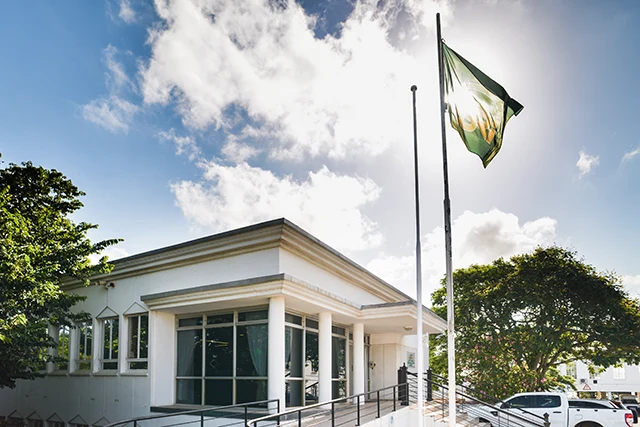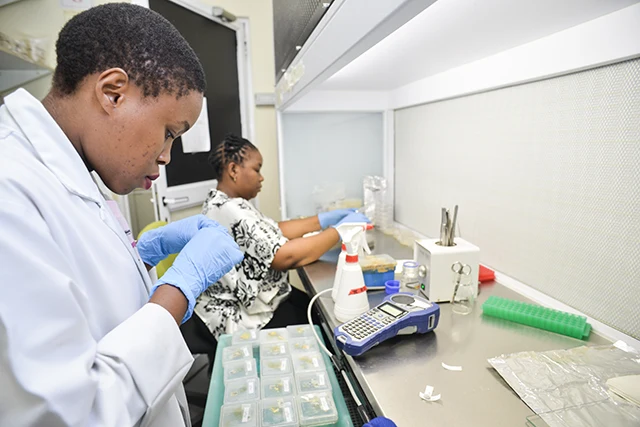
Director’s Message

Dr Shadrack Moephuli
SASRI 100 years – a century of achievement, a future of possibilities
In our previous edition, we communicated news about this year being a century since the establishment of the South African Sugar Research Institute. Celebrations continue with recognition of some of the milestones of SASRI and a brief reflection on the future.
More than a 100 years ago, the sugar industry experienced agricultural crop yield reductions due to biotic (pest and disease infestations) and abiotic (drought, salinity, high temperatures, etc) stress that devastated production. In response, the South African Sugar Association (SASA) established the South African Sugar Experiment Station (SASEX) with a mandate to develop sugarcane varieties adapted to local agroclimatic conditions with resilience to pests and diseases, for better yields.
Since its establishment, SASEX, renamed South African Sugar Research Institute (SASRI), focused on its mandate of developing scientific solutions for sustainable cultivation of sugarcane and resilience to abiotic and biotic stresses. The success of SASRI has largely been through participatory response to grower needs, innovation and relevance to current agroclimatic challenges.
SASRI has maintained focus on its mandate using 5-year plans, developed in consultation with growers and millers, and implemented through consultative annual programmes of work comprising a portfolio of research and development as well as knowledge exchange projects. In short, an iterative research and innovation system integrated with knowledge exchange (extension services) has been the cornerstone of SASRI’s success. This approach has enhanced confidence and trust in the organisation’s scientific endeavours that, in turn, have consistently enabled adoption of new technologies, knowledge and scientific solutions by growers.
Over the years it has become apparent that SASRI’s achievements are due to dedicated scientists and other employees. The collaborative milieu at SASRI enabled innovations and effective knowledge exchange with large- and small-scale growers, including miller-cum-planters. This also included collaboration with other knowledge generating institutions, particularly universities and research partnerships. This sugarcane innovation system enables relevance, good quality research and development that, in turn, boost delivery of new solutions and products for the industry.
Although SASRI’s primary mandate is on agronomic aspects of sugarcane as a crop, millers have also been instrumental in providing insights into the harvesting of sucrose and other by-products from cane. The collaboration between millers and SASRI has been instrumental in the breeding to develop new varieties suitable to both grower and miller needs, thus creating value throughout the industry.
SASRI’s research and development, particularly scientific findings and observations provided insights towards better understanding and knowledge about characteristics of the sugarcane crop. This enabled further research and development whereby the International Consortium of Sugarcane Biotechnology (ICSB) published the whole genome of sugarcane annotated. Knowledge of the sugarcane genomics presents opportunities for breeding of new varieties suitable for diversified use.
Considering new breeding technologies such as zinc finger nucleases, TALENs and CRISPR-Cas that could be utilised to further unravel knowledge about sugarcane crop, opportunities for a diversified industry could be accelerated.
For example, SASRI is already collaborating with the University of Stellenbosch to explore ways of harnessing the use of CRISPR-Cas – as a gene editing technique towards developing new sugarcane genotype/s. It would not be the first time that such technology has been used on important crops such as sugarcane. This technology has been applied towards developing traits for herbicide resistance and biomass yield in sugarcane by other researchers elsewhere.
Broadening the use of biotechnology, including genomics and gene editing is likely to enable SASRI to incorporate the use of bioinformatics; that in turn would facilitate scientific analysis towards better understanding of the crop. Bioinformatics as a tool for research and development would in turn enable SASRI to incorporate artificial intelligence for better analytics and presentation of solutions to growers. In other words, SASRI will soon need to explore how best to shift into high-throughput data analytics and management for real-time solutions.
SASRI presents its acknowledgment and thanks to all its stakeholders, particularly the large- and small-scale growers, miller-cum-planters and millers for contributing to its achievements. We look forward to all collaborations, especially the participatory knowledge exchange with all growers. People at SASRI are the most important resource for the sustainable success of research and development in the sugar industry, we therefore express our appreciation for their continued commitment to the organisation’s success.
The Link is a short newsletter that provides advice on key aspects for sustainable sugarcane production and productivity. We hope you will gain insights from these articles, gather additional information, especially from the experts at SASRI, and apply such knowledge in your farming practices. We hope you enjoy reading the articles.



